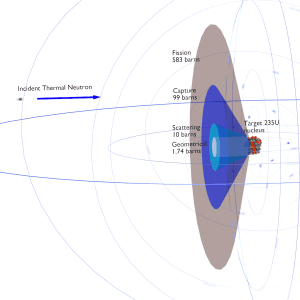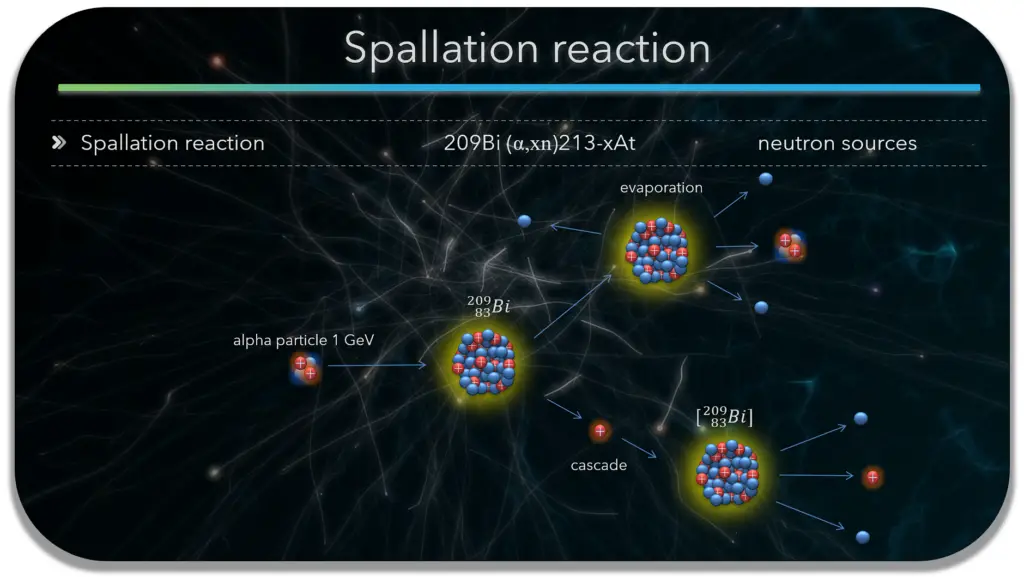A spallation reaction occurs when a particle hits a nucleus with sufficient energy and momentum to knock out several small fragments or smash them into many fragments. Spallation, the bombardment of a heavy metal target by an intense beam of protons, has become an established technique for the production of high-intensity fluxes of neutrons. There are, currently, proposals and design studies for a variety of high power sources covering an increasing range of applications such as energy production, transmutation of radioactive waste, and tritium production facilities, as well as the second generation of neutron sources for condensed matter research.
209Bi (α,xn)213-xAt
When a projectile interacts with a target nucleus, a few energetic particles are produced, leaving the nucleus in a highly excited state. The light ejected particles may be neutrons, protons, or various composite particles equivalent to nuclei of hydrogen, helium, or lithium isotopes. The nucleus returns to the ground state by emission of neutrons, protons, deuterons, tritons and alpha particles – ‘evaporation’. The energetic particles go on to interact with other target nuclei producing more excited nuclei, and hence neutrons, in a nuclear cascade.
Main Characteristics of Nuclear Reactions
In nuclear physics, the nuclear cross-section of a nucleus is commonly used to characterize the probability that a nuclear reaction will occur. The cross-section is typically denoted σ and measured in units of the area [m2]. The standard unit for measuring a nuclear cross-section is the barn, equal to 10−28 m² or 10−24 cm². It can be seen that the concept of a nuclear cross-section can be quantified physically using a “characteristic target area,” where a larger area means a larger probability of interaction.
 For a given event, the cross-section σ is given by
For a given event, the cross-section σ is given by
σ = μ/n
where
- σ is the cross-section of this event [m2],
- μ is the attenuation coefficient due to the occurrence of this event [m-1],
- n is the density of the target particles [m-3].
